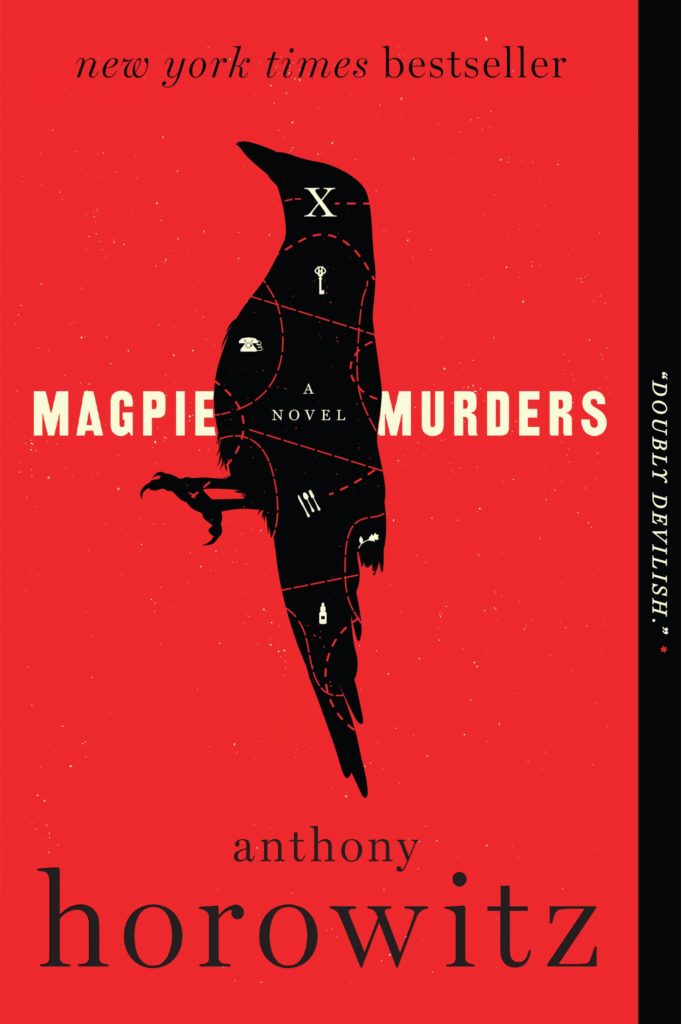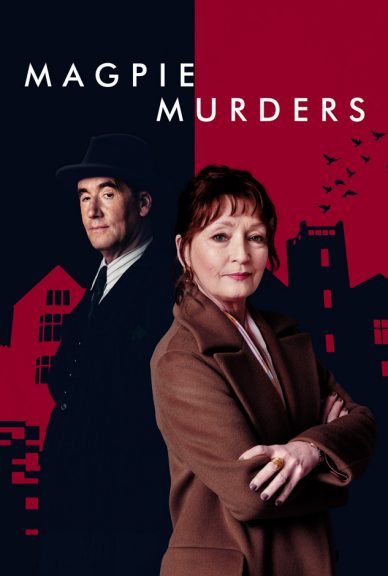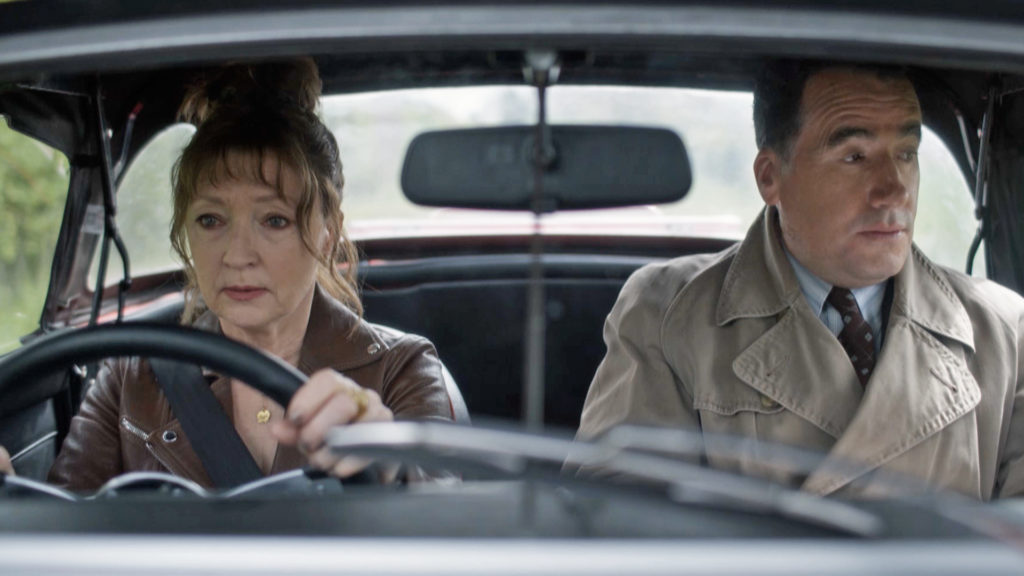Magpie Murders by Anthony Horowitz
First, there’s the book ~~
Then, there is the PBS Masterpiece Series ~~
I make it a firm rule, to read the book before I watch any film or television adaptation. And in the past, I almost always, always prefer the book ~~ but not in this case…
Don’t get me wrong the book was very, very good, but Magpie Murders was made into an almost more appealing story by Masterpiece/PBS by the author himself. You see, Anthony Horowitz, is the also creator of “Midsomer Murders” and “Foyle’s War” — both super PBS series, and he obviously excels at bringing a static book to life on the screen.
First the book:
Magpie Murders has a dual plot– two mysteries in one. We open in current day with an editor, Susan Ryeland settling in over a weekend to read the newest manuscript from her publishing firm’s best-selling mystery author. After the first chapter, the story then switches to the manuscript she is reading — an old-fashioned whodunnit, set in the 1950’s written by the fictitious author, Alan Conway, who created a famous detective in Atticus Pünd.
The first 200 or so pages of Magpie Murders are very reminiscent of an Agatha Christie novel, and I was wondering while reading it why there was so much hype about the book. The manuscript was a typical cozy mystery set in an English village with a host of Christie-like characters. But, those first 200 pages seemed to drag a bit as each suspect was introduced with their pertinent backstories. But, in the end, they serve to set up the real story which unfolds in the second half of the novel. You see, the manuscript ends abruptly because its last chapter is missing and we (and the publisher) have no idea ‘who done it’. That’s when Magpie Murders became a page turner for me, as the publisher tries to find the missing chapter, and solve not only the murder in the manuscript, but also a possible contemporaneous murder. Mr. Horowitz uses the second half to bring together many loose ends between the manuscript mystery and our modern day one — but I won’t tell you any more.
I know, I know it sounds very confusing, but stay with me here…
The book contains some great literary tricks — Mr. Horowitz combines humor, drama, and intrigue — which makes for a multi-layered story that eventually becomes riveting. There are hidden meanings and anagrams, which are revealed in the second half of the book — quite fun to read. (Atticus Pünd’s anagram was my favorite, but not suitable to repeat here.) There are really three authors – the manuscript author and the modern day best selling mystery author – both of whom are actually Anthony Horowitz. Okay I’ll give you a moment here to digest all that.
Within the pages, the author (and Mr. Horowitz) marvel at our appetite for crime. Saying at one point, the BBC would have little to broadcast — if not for crime programming:
Inspector Morse, Taggart, Lewis, Foyle’s War, Endeavour, A Touch of Frost, Luther, The Inspector Lynley Mysteries, Cracker, Broadchurch and even bloody Maigret and Wallander – British TV would disappear into a dot on the screen without murder.
It’s strange when you think about it. There are hundreds and hundreds of murders in books and television. It would be hard for narrative fiction to survive without them. And yet there are almost none in real life, unless you happen to live in the wrong area. Why is it that we have such a need for murder mystery? And what is it that attracts us? The crime, or the solution?
Do we have some primal need of bloodshed because our own lives are so safe, so comfortable?
Now to the PBS Masterpiece version, which I watched only after I finished the book. As I alluded earlier, the television series enhances the book and brings it to life in a most wonderful way. The connections between the manuscript and the current day mystery are clearer and the series brings these two timelines and worlds together in a most entertaining way.
And in a magical turn, our editor in current day and Atticus Pünd from the 1950’s, come together to solve the case of the missing manuscript chapter and the possible murder of the manuscript author. Atticus Pünd appears and advises Susan Ryeland as she visits the village where her famous mystery writer lived. Is it real or is it imagined? We are left to interpret for ourselves.
Whereas in the book, Atticus only appears in the pages of the manuscript. Also, the book is a bit more work, the reader has to link the bridges between to the two mysteries and work to sort out the connections. The book also has many more suspects than in the television series.
The television version of Magpie Murders crosses back and forth in time allowing for a reprieve from the more classically-paced 1950’s mystery manuscript. And wonderfully, the same actors play dual characters in the manuscript and current day. You see, the famous mystery author based his characters on modern-day neighbors, villagers, police, and lawyer – often times not so kindly.
I know you’re probably a bit baffled by all this so I’ll close by recommending Magpie Murders – however you can get it — by book or by television.
Either way, a terrifically unique mystery and really entertaining.
Here’s the trailer for the PBS series








